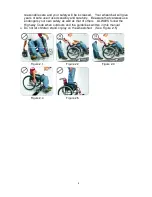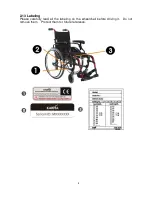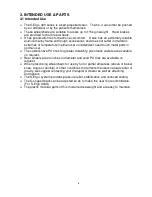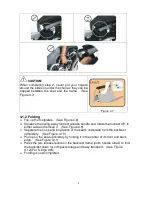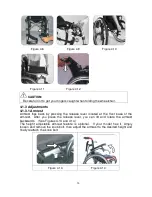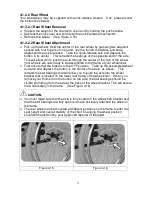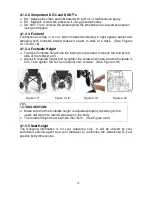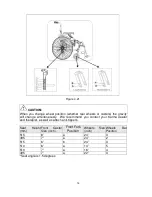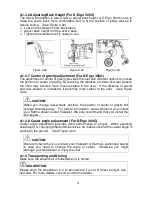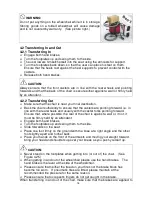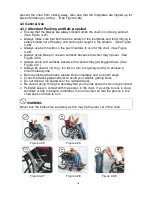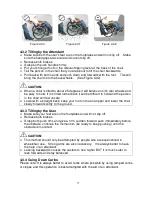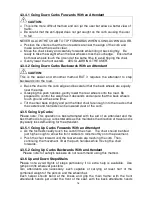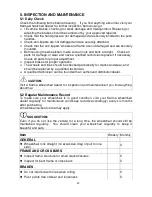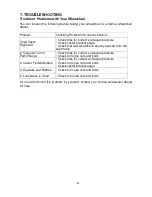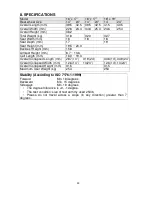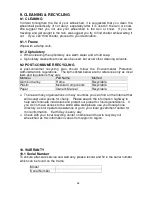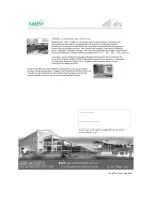
18
4.3.4.1 Going Down Curbs Forwards With an Attendant
CAUTION:
This is the more difficult method and can jar the user but allows a better view of
traffic.
Be careful that the anti-tipper does not get caught on the curb causing the user
to fall.
NEVER ALLOW THE CHAIR TO TIP FORWARDS WHEN GOING DOWN A CURB.
Position the chair so that the front casters are near the edge of the curb and
make sure that the road is clear.
Move the chair slowly and carefully forwards while tilting it back slightly. Be
ready to take the weight when the rear wheels cross the curb edge. Ensure that
both rear wheels touch the ground at the same time to avoid tipping the chair.
Gently lower the front casters. AVOID JARRING THE USER.
4.3.4.2 Going Down Curbs Backwards With an Attendant
CAUTION:
This is the easier and smoother method BUT it requires the attendant to step
backwards into the road.
Back the chair to the curb edge and be careful that the back wheels are equally
near the edge.
Grasping the push handles, gently lower the rear wheels onto the road. Be
prepared to control the weight as it descends and ensure that the back wheels
touch ground at the same time.
Tilt the chair back slightly and pull the tilted chair far enough into the road so that
the casters and footrests can be lowered clear of the curb.
4.3.5 Going Up Curbs
Please note: This operation is best attempted with the aid of an attendant and the
best method is to go up curbs forwards as this maintains the direction of travel and is
physically less demanding for the attendant.
4.3.5.1 Going Up Curbs Forwards With an Attendant
As the footrests nearly touch the curb tilt the chair. The chair should be tilted
just high enough to allow the front casters to roll smoothly onto the pavement.
Push the chair forward until the rear wheels are touching the curb. Then,
continuing the movement, lift at the push handles while moving the chair
forwards.
4.3.5.2 Going Up Curbs Backwards With an Attendant
Please note: for safety's sake we do not recommend using this method.
4.3.6 Up and Down Steps/Stairs
Please note: avoid flights of steps particularly if no extra help is available. Use
ramps or lifts wherever possible.
Two attendants are necessary, each capable of carrying at least half of the
combined weight of the person and the wheelchair.
Each helper should bend at the knees and grip the main frame: with the front
attendants hands just under the front of the seat, with the back attendants hands
Summary of Contents for S-Ergo 300 Series
Page 1: ...S Ergo 300 series S Ergo 300G KM 3020 2 S Ergo 305 KM 3520 2...
Page 2: ......
Page 34: ......
Page 35: ...104 40101 Rev 01 Sep 2008...

